No products in the cart.
In the grand theater of HVAC systems, there’s a bit of a curious subplot playing out in the United States, particularly in the sun-soaked land of Central Florida. It involves the mini-split Syst technology that seems to have taken the rest of the world by storm, yet here in the U.S., it’s met with a peculiar mix of skepticism, resistance, and, dare I say, outright hostility from some quarters of the HVAC community. Now, why would this be?
To get to the heart of this, we need to take a step back and look at the mini-split system in all its glory. Mini-splits are these clever little devices that offer a ductless solution to heating and cooling. They’re compact, versatile, and—most notably—they allow for zone-specific climate control, which can be a godsend in places where the sun’s rays feel more like a curse than a blessing.
So why, then, does this seemingly perfect system get the cold shoulder from some HVAC contractors in the U.S.? Especially when, in other parts of the world, mini-splits are practically the air conditioning equivalent of sliced bread—ubiquitous and loved by all. To understand this, we need to delve into a few key factors, and maybe, just maybe, poke a little fun at the absurdity of it all.
The Battle of Tradition vs. Innovation
First and foremost, let’s talk about tradition. The United States has a deep-rooted tradition of using central air systems. It’s practically woven into the fabric of American homebuilding. Central air is big, it’s bold, and it comes with a sense of reliability that’s been earned over decades of use. Mini-splits, on the other hand, are the new kid on the block. And we all know how that story goes: the new kid is often met with suspicion and, in some cases, outright disdain by those who’ve been around the longest.
This brings us to an uncomfortable truth: there’s a certain level of inertia in the HVAC industry. Many contractors have spent their careers working with central systems, and there’s a comfort in sticking with what you know. The idea of adopting new technology—one that might require learning new installation techniques or troubleshooting methods—can be daunting, if not outright irritating, to those who are set in their ways. The result? A kind of professional conservatism where mini-splits are concerned.
The Myth of the Impossible Install
Another factor at play is the installation process itself. You see, mini-splits, for all their benefits, require a certain level of precision during installation. And this is where things get sticky. In theory, installing a mini-split isn’t rocket science, but in practice, it demands a level of technical expertise that, unfortunately, isn’t always present. It’s a bit like asking someone to prepare a delicate soufflé when they’ve spent their entire life making toast. Sure, toast is great, but you can’t expect someone who’s never touched a whisk to suddenly turn out a five-star dessert. In the HVAC world, this translates to a lot of “technicians” who are, in reality, glorified day laborers with an EPA license. And let’s be honest, you’d be surprised how many of them wouldn’t know a micron gauge if it hit them in the face. The result? Mini-splits that aren’t installed correctly, lead to performance issues, leaks, and a general sense of “these things just don’t work.”
The Convenient Excuse: Parts and Availability
Now, let’s tackle one of the most common complaints you’ll hear from mini-split naysayers: “I just can’t get parts.” This line has been repeated so often that it’s almost become a mantra in certain HVAC circles. But here’s the kicker—this issue of parts availability seems to be a uniquely American problem. In other parts of the world, parts are readily available, and the systems work just fine. So what’s going on here?
Well, this is where things get a bit modern-day Shakespearean. The “I can’t get parts” argument is often a smokescreen for a deeper issue: an unwillingness to deal with something unfamiliar. If you don’t know how to install a mini-split properly, it’s much easier to blame the system or the supply chain than to admit that you might need to up your game.
It’s also worth noting that the parts argument is increasingly becoming less and less valid as mini-splits grow in popularity stateside. More systems mean more demand for parts, which naturally leads to better availability. But old habits die hard, and some contractors cling to the parts excuse like a security blanket.
The Real Deal: Mini-Splits Are Great—If You Know What You’re Doing
So, what’s the real deal with mini-splits in the U.S.? The truth is that they are fantastic systems when installed correctly. They offer a level of efficiency and flexibility that central systems simply can’t match. But, and this is a big but, they require a level of expertise during installation that isn’t always present in the field.
It’s a bit like the difference between driving a stick shift and an automatic. Both can get you where you’re going, but one requires a bit more finesse and skill. The problem is, too many people are out there trying to drive stick without ever having learned how, and then blaming the car when they stall out.
The bottom line is this: mini-splits are only as good as the technician installing them. If you’ve got someone who knows what they’re doing, you’ll end up with a system that’s quiet, efficient, and perfectly suited to your home’s needs. But if you’ve got someone who doesn’t know a micron gauge from a hole in the ground, well, you’re in for a world of frustration.
Conclusion: A Call for Better Standards and Open Minds
In the end, the mini-split conundrum in the U.S. boils down to a need for better training, higher standards, and a willingness to embrace new technologies. The HVAC industry, like so many others, is evolving, and those who refuse to evolve with it are destined to be left behind. So, to all the mini-split skeptics out there, I say this: Don’t be afraid of change. Embrace it. Learn it. And for heaven’s sake, get yourself a micron gauge.






